June 18, 2007
UpStage version 2
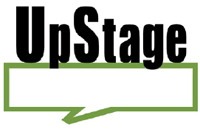
Launch
You are warmly invited to join the UpStage team to celebrate the launch of UpStage version 2 :: June 28, 5:30-7:00 pm :: New Zealand Film Archive (cnr Taranaki & Ghuznee Streets) :: To mark the software launch an exhibition, Puppets to Pixels – an interactive playground for children of all ages, will run at the New Zealand Film Archive Gallery from June 28 - July 15. And 070707, a festival of UpStage performances, takes place on July 7, online and screened simultaneously at the Film Archive.
UpStage is a ground-breaking web-based venue for live, online performance. First launched in 2004, it’s time for the second release with improvements to the interface and innovative new features. UpStage V2 has been developed by Avatar Body Collision and Douglas Bagnall, with funding assistance from the Community Partnership Fund of the Digital Strategy, and the generous support of sponsors CityLink, MediaLab and Auckland University of Technology.
Posted by jo at 05:09 PM | Comments (0)
March 22, 2007
Introducing The Artmob (beta): Benjamin Thomas

Subscribe Now!
The Artmob is pleased to announce its pilot project from artist Benjamin Thomas. Benjamin's work on OBFAT introduces "Original Advice and Inspirational Phrases" to the public under a Creative Commons Attribution Share Alike licence. Phrases are sometimes matched with typeset and graphics by Benjamin.
For 30 days, Benjamin Thomas will be broadcasting phrases, graphics, and calls for participation via SMS/MMS direct to subscriber's mobile phones through The Artmob. To find out more and subscribe please visit TheArtmob.net.
The Artmob is a new project currently in its pilot stage. We are devoted to curating and commissioning art for mobile devices. Artmob will also provide resources for artists to create mobile content in effort to expand the dialogue on mobile media into the artist realm. For more info and contact information please visit TheArtmob.net.
Posted by jo at 10:07 AM | Comments (0)
February 05, 2007
4th International Workshop in Mobile Music Technology 2007
![]()
Call for Proposals
MOBILE MUSIC TECHNOLOGY :: FOURTH INTERNATIONAL WORKSHOP :: AMSTERDAM, THE NETHERLANDS, 6-8 MAY 2007 :: Submission deadline: 12th March 2007.
Combining music and mobile technology promises exciting future developments in a rapidly emerging field. Devices such as mobile phones, Walkmans and iPods have already brought music to the ever-changing social and geographic locations of their users and reshaped their experience of the urban landscape. With new properties such as ad hoc networking, Internet connection, and context-awareness, mobile music technology offers countless new artistic, commercial and socio-cultural opportunities for music creation, listening and sharing. How can we push forward the already successful combination of music and mobile technology? What new forms of interaction with music lie ahead, as locative media and music use merge into new forms of everyday experiences?
This series of annual workshops began to explore and establish the emerging field of mobile music technology in 2004. This fourth edition of the Mobile Music Workshop in 2007 offers a unique opportunity to participate in the development of mobile music and hands-on experience of cutting-edge technology.
This year’s workshop is hosted by STEIM and Waag Society in Amsterdam, The Netherlands, and partners with the Futuresonic Festival in Manchester, England, taking place later the same week. The programme of the workshop will consist of keynote presentations from invited speakers, peer-reviewed paper presentations, poster sessions, in-depth discussions about the crucial issues of mobile music technology, demos of state-of-the-art projects, break-out sessions and live events. Registered participants will take part in hands-on sessions conducted by leaders in the field. In addition to traditional presentation sessions, the programme includes events open to a general audience, facilitating the presentation of artworks and technological breakthroughs to a wider public.
The Mobile Music Workshop sets the stage for a collaboration that brings together leading institutions in both experimental electronic music and mobile media. STEIM (the studio for electro-instrumental music) is a centre for electronic music production well known in the performing arts. STEIM promotes the idea that Touch is crucial in communicating with electronic and digital arts technologies, a vision that over the years has given birth to physical, sensor-based musical instruments. Waag Society is a research and development institute in the fields of networked art, education and creative industries. Waag develops platforms for artists to reach society through networked collaboration, media streaming, and locative media.
CALL FOR PARTICIPANTS AND WORKS
We invite practitioners, artists, designers, hackers and researchers from all areas, including music, technology development, new media, sound-art, music distribution, cultural/media studies, locative media and industry to submit work and register to attend. Don't miss this chance to help shape the mobile music landscape of the future! Participants are encouraged to submit their work in mobile music technology to the categories below. The partnership with the Futuresonic Festival allows those coming to Europe to make a single trip to attend both events.
* Papers
We invite submissions of workshop papers presenting new projects, approaches or reflections exploring the topic of mobile music. Potential submissions could include but are not limited to mobile music systems or enabling technologies, interface design, legal issues, user studies, ethnographic fieldwork, social implications, art pieces and other areas relevant to mobile music.
Accepted paper authors will be given a time slot during the workshop for presentation and discussion of their work. Format: up to 8 pages in ACM SIG publications format (shorter papers welcome). For templates, see http://www.acm.org/sigs/pubs/proceed/template.html
* Posters
We also invite the contribution of posters that document work-in-progress projects or ideas in similar areas of mobile music technology as the papers.
Posters will be on display during the duration of the conference. We will arrange a poster presentation session where attendees will be able to discuss the works with the authors. Format: 2 pages in ACM SIG publications format
* Demonstrations
We also invite submissions of work to the demo category. Besides encouraging paper and poster presenters to bring a demonstration as a complement their presentation, we encourage submissions of stand-alone demos of mobile music systems or enabling technology. Their implementation should be ready enough to be demoed, and will possibly be shown to the general public during open sessions depending on their robustness. Format: 2 pages in ACM SIG publications format.
SUBMISSIONS
Please email your submission as a PDF file in the appropriate format to submissions[at]mobilemusicworkshop.org In the subject line, state MMW SUBMISSION followed by PAPER, POSTER or DEMO and the name of the main author. Submissions will be peer-reviewed by a committee of international specialists in the fields of mobile music, interactive music, and locative media.
DEADLINES
Submission deadline: 12th March 2007
Notification of acceptance: 2nd April 2007
Registration deadline: 16th April 2007
Final submission deadline: 16th April 2007
REGISTRATION & FEE
This year’s workshop will have both closed sessions for registered participants and sessions open to the general public. The number of participants for the closed sessions of the workshop is limited to 50 places. Accepted submitters are given priority, other participants are accepted on a first-come first-served basis. Registered participants will have automatic access to all sessions of the workshops. The closed sessions of the workshop will be charged both a regular and a reduced student fee, similar to the last edition’s fees.
Registration deadline: 16th April 2007
The open sessions will be advertised in more detail closer to the event. The fee for the open sessions will be event-based. Scheduling and registration fees will be coordinated with Futuresonic to allow participants to easily attend both events.
ORGANISERS
* International Steering Committee
Atau Tanaka (Sony CSL Paris, France)
Frauke Behrendt (University of Sussex, UK)
Lalya Gaye (Viktoria Institute, Sweden)
* Local Organising Committee
Kristina Andersen (STEIM, The Netherlands)
Robert van Heumen (STEIM, The Netherlands)
Ronald Lenz (Waag Society, The Netherlands)
MORE INFORMATION
For more information about the previous and up-coming workshops, the ACM SIG publications format as well as travel and accommodation information, please consult: http://www.mobilemusicworkshop.org/
Posted by jo at 11:13 AM | Comments (0)
February 03, 2007
Networked Theatre of the Oppressed
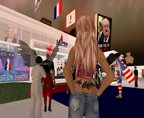
Second Life Theatre Group Meeting
Networked Theatre of the Oppressed :: First informal Second Life theatre group meeting in Bootlab Berlin :: Sunday February 6, noon (brunch time, 12.00 h) :: Tucholskystraate 6.
The dictatorship of the bourgoise melodrama stage has been an inspiration to living theatre, Brecht, Boal, and many. By combining the poetics of storytelling, digital narrative and network performing, the ghostly streets of Second Life become an open stage where the practice of everyday life becomes the raw material for political intervention thru classical drama, literature and net.art techniques. It is time for the triple alienation of the cyburbian multitudes!
Second Life's publicity is generated outside of the internet based on old media PR, circumventing the rest of the net. It is a newbie honeypot, or a themepark for cyberspace history most of all it is a "opera buffa" a theater of vulgarities, and shallow motivations, certainly more reality than what the cultural institution of the theatre has to offer today.
In our first 2 hour practise meeting we want to discuss possibilities of stage design, choreographic moves, myths and topoi, requisites and figurines, sketches of existing 3d datasets and scripting knowledge, we want to identify interesting text resources and invite people researching the field, detecting possibilities for a theater of net.art 2.0 etc. pp. not just revolting but playing with the zombie cybermyths of SL.
The Second Life can not be lived rightly...
- - how can you have virtual sex and no virtual communism?
- - between underworld and purgatory, spaces for the organized networks of
death
- - did 1995 avatar utopia needed lindon economy to reach the masses.
- - there are more than 3 million condemned waiting for liberation.
- - come and sacrifice your pets at a pergamon temple.
- - a virtual world is impossible. lindon dollars are halluzinogenic.
- - california dreaming, do you feel the network effect?
- - zoylent green is us!
- - instalaremos la primera antena zapatista de radio insurgente y la
otra campa??a en second life.
http://bootlab.org
http://possibleworlds.org
Posted by jo at 11:29 AM | Comments (0)
February 02, 2007
Dispatx Art Collective
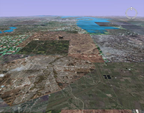
Tools of a Socialised Internet
Dispatx is a curatorial platform that provides the tools of a socialised internet for the development and presentation of contemporary art and literature. It was created in 2004 by Oliver Luker, Vanessa Oniboni and David Stent. The website functions both as a rigorous concept-space for the exploration of the creative method - the organisational process which translates creative vision into creative product - and as an exhibition space for concluded works.
Visitors are invited to interact with the working processes of contributing artists presented online and to create unique private collections of finished works in My Dispatx. For each edition we publish themes for exploration that are open to the interpretation of collaborating artists. From the moment a theme is announced, the process of selection for collaborative projects and concluded works is open.
Selected projects are developed over a period of 5 months in the Studio. Their evolution can be observed in Make, where users can comment on the progress of each artist. When projects are finalised they are collated together and published in the Show section of the following edition, where the content is processed and presented by genetic algorithms.
We have provided a series of tools specifically for the visitor, allowing you to create private collections, leave comments, and subscribe to RSS feeds for the projects that interest you the most. To familiarize yourself with these changes, please take the site tour.
Erika Lincoln has started posting on Dispatx's website about a new work in progress titled "Liquid Prairie". The project deals with walking and mapping (in stages) the Red River Floodway; a 46km diversion around the City of Winnipeg. You can follow along over the four months and watch the snow melt and the water flood the prairie. There are also 18 other projects being showcased as well. [via Rhizome]
Posted by jo at 02:32 PM | Comments (0)
January 16, 2007
WhisperBox
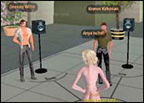
Interactive Sound Installation in Second Life
Second Life, one of the most populated MMORPG, is an important watching point to verify how the borderline between real and virtual tends to become more and more ephemeral. In the last months Second Life has seen many famous names and brands of the real world coming into its virtual spaces. The Reuters news agency has opened a virtual editorial office, IBM decided to test here its v-business (virtual business) idea. Many other events as lectures, talks (Lawrence Lessig), concerts (Suzanne Vega) has packed the SL dwellers agenda. So an interactive audio installation couldn't be missed. A certain Robbie Dingo (this is the name of the homonymous British sound designer avatar) programmed his WhisperBox (a 21st Century Folk Song).
The installation, hosted by the SL Phoenicia Center for Contemporary Art, captures words and pieces of the conversations that happens amongs the avatars inside its space (a circular space marked off by seven speakers) and translate these pieces in sounds. Tones and rhythms are directly influenced by the conversation progress. Furthermore WhisperBox provides also a visualization form of the spoken words, appearing near each avatar in a sort of 3D balloon. The displayed text then is an echo of the previous conversations. Clicking on different avatars with active balloons, their spoken words are played as music, and the previous conversations are immortalized, in a sort of inextricable and synaesthetic loop, made out of real and virtual, present and past, expression and representation." Vito Campanelli, Neural.
Posted by jo at 10:15 AM | Comments (0)
November 25, 2006
Forward the Online Revolution

We Still have the Power
"...We are inventing new forms of artistic and cultural expression, from machinima to mashups via video clips and blogs, and soon we will find ways to curate, present and sell them, as we do with every other form of artistic expression. Participative media, citizen journalism, blogging and social networking mark the point at which the social structures of the second half of the 20th century finally break down and vanish and new relationships emerge.
Companies like Dell feel the fury of their former consumers and try to reinvent themselves in the image of the participative community, even if they sometimes stumble. And every media outlet is turning to its former audience and trying to find ways to include and embrace people, hoping that they can turn participation into money when previously all they needed were passive viewers...
So how are we going to deal with the social, political and economic impact of the monster that we have unleashed since the two-way web came back into fashion? If we're going to move forward and do so in a way that will give us a modicum of network and social justice we have to recognise two fundamental principles. The first was expressed most clearly by Stanford law professor Lawrence Lessig when he pointed out that "code is law".
We write the code, the underlying software that creates the network and so, within the broad limits of physical and mathematical reality, we can do whatever we want with or to the network.
The second is even more fundamental.
In the big game of scissors, paper, stone that characterises the network's evolution, politics trumps engineering.
The limits on our capabilities, and the breadth of our vision, depend on politics (which includes religious and social concerns) far more than engineering.
This means that technical bodies like the Internet Engineering Task Force will always lose to the political groups like ICANN, the body that the US Government has appointed to look after things like domain names and IP addresses..." From Forward the online revolution by Bill Thompson, BBC News.
Posted by jo at 05:10 PM | Comments (0)
Nearness
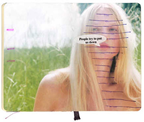
Information Artefacts
Katharina Birkenbach (aka Ponypink), an Amsterdam- and soon Berlin-based designer, has just launched a pretty fresh social networking website, it's called Nearness. Built on Mediamatic's anyMeta system, it allows you to feed it with various information about events, people, things, etc., all of which are equally treated as artefacts. This allows users to create rich interconnections between the individual entries, creating an ever more complex network of stuff.
I asked Katharina to briefly line out what the idea behind it is: "Nearness is an environment where people can store their information that is surrounding them in their daily life. It is not focused on one kind of media but is open for nearly any kind of information, doesn't matter how big or small, important or unimportant it is. Nearness can become an always present little companion, which is helping you to collect, to not forget, to organise the things you like. But organising not in the sense that you are somehow the administrator of a complex folder system, but by generating context for the data and embedding it in the data network. The context in which, for example, your favourite book is displayed is not only set up by the information you've entered, but all the users of Nearness. In this sense it can develop to some kind of stimulating treasure trove."
Trying to explain the potential of it, she also sent me a scan from her sketchbook which is pictured above, along with its history: a photo from i-D magazine, alluding to The Virgin Suicides. A sticker from Dazed and Confused which itself is a quote from The Who. Ten friends also made collages like this as part of something called Feed Me. So, Nearness in her vision could grow to become a tool for the same process. Something that today many creative people use notebooks for: collecting snippets of culture, ideas – in a way making mental collages but with the power of a networked system. [blogged by Sascha on we-make-money-not-art]
Posted by jo at 04:53 PM | Comments (0)
Interview by Simon Mills

Sean Cubitt
[...] Simon Mills: How do you think the plethora of so-called Web 2.0 applications (E.g. Myspace, Youtube, Bitorrent, Google) are changing the media landscape? These are all predominantly based on constantly evolving databases so exhibit a distinctly new media aesthetic. They also seem to aid a more democratic means of cultural production making publication and involvement cheap and easy. Are you sold on the idea of ‘network as platform’?
Sean Cubitt: Cheap and easy is always good. talk, as they say, is cheap. Thank God. It takes millions of people talking (and writing, which is nearly as cheap) to produce one poet; and it takes millions strumming away to produce one musician. Those of us who only talk and strum are nonetheless experts, in the sense that we know how hard it is to make words and sounds do what you want them to, and so we are the perfect audience for the poet and the muso. It will take a million mash-ups to make one work that will really make your jaw drop.
And yet I can’t help fretting that the NewsCorp purchase of MySpace, and the Google buy-out of YouTube, are exemplary moves towards the commercialisation of cultural democracy. A million content-producers raise the levels, and create the audience, but the coming Homer will be just another unpaid prosumer in the gardens of digital labour. The cynic in me sees digital gaming as training for the unpaid labour that was informally organised in the TV era. Already back then, as Dallas Smythe noted in the 1950s, all non-working, non-sleeping time was being colonised by another form of work, which he called the production of attention-value. When broadcasters sell audiences to advertisers, they obviously don’t enslave them body and soul. What is changing hands is the attention of viewers. And how are the viewers paid for their attention? I suppose you could answer that they receive some kind of gratification from the endless repetition of adverts and jingles, but it seems a paltry recompense when compared with the billion-dollar trade in eyeballs. The same has to be said of content-producing internet users, with bells on.
There is no longer any reason to believe the internet is intrinsically democratic, or intrinsically anything. The network is the network, in the same way air is air. Air is of course intensely democratic, but then we thought the same about water, and look how that has become a user-pays industry, and a weapon of ar. This doesn’t mean we should withdraw from drinking and washing; and it doesn’t mean we should refrain from struggling for a viable ecology. Ditto the internet: we can no longer live as if it did not exist. To abandon it to NewsCorp would be unthinkable. Historically, the net, the web, and almost every working application has been thrown together by creatives, whether for fun or profit. Almost nothing has been produced by corporations. Clearly corporate structures, however they benefit from network communications, are inadequate to the cultural innovations that users produce. And yet they have the inherited wealth that allows them to buy, one by one, every new tool and toy. I admire Wikimedia for holding out as long as they have, and longer. Linux likewise. These are the models: pirate enclaves, temporary autonomous zones. The reason we keep our smiles, as the greedy, incompetent commercial sector mops up our devotion to the internet gift economy, is that they manifest with every purchase their inability to originate, and in that admission, their incapacity for the global rule to which they lay claim.
Perhaps I’m wrong in thinking that democracy is commercialised in web 2.0 formats. Perhaps instead commercialism is being democratised. Certainly the nature of both is changing. Some of me is conservative enough to resent and regret the changes. The rehash of PR handouts by journalists, and the rehash of journalism by bloggers, isn’t the journalism I praise – the journalism represented by Robert Fisk at the London Independent. Some of me still believes that freedom of speech is important to democracy, and resents its loss in corporate media, and its confusion with mere opinion in the blogosphere. I have more than enough opinions of my own. What I need is journalism. This is the sound of an older democracy complaining about its own demise, and painting an already nostalgic and inaccurate picture of its actually smutty and corrupt past. Some basic media ethics need to be introduced at school level – driver’s ed for the web generation. A recent scandal here – a sexual assault posted on YouTube by working-class schoolboys – suggests the alternative. (Of course I do not want to argue that a veneer of irony makes this permissable to a different class of people – if I or anyone never saw Clockwork Orange again, the world would not be a worse place).
Nonetheless, the network is the only platform we’ve got, and we’d be idiots to give it up... From Sean Cubitt Interview by Simon Mills, Framed Journal.
Posted by jo at 04:01 PM | Comments (0)
November 15, 2006
Opening at Ars Virtua Tonight

13 Most Beautiful Avatars
13 Most Beautiful Avatars by Eva and Franco Mattes (a.k.a. 0100101110101101.ORG) :: Curated by Marisa Olson :: Nov. 15 - Dec. 29, 2006 at Second Life's Ars Virtua gallery. Nov. 30 - Dec. 19, 2006 at The Italian Academy, Columbia University (NYC).
"13 Most Beautiful Avatars" is the newest installment of Time Shares, a series of online exhibitions co-presented by the New Museum of Contemporary Art and Rhizome.org, in conjunction with Rhizome's "Tenth Anniversary Festival of Art & Technology". The exhibition, in Second Life's increasingly popular Ars Virtua gallery — a virtual nonprofit arts organization — will mirror the art gallery in which the newest work by Italian artists Eva and Franco Mattes (a.k.a. 0100101110101101.ORG) is being exhibited.
The Matteses have been living in the virtual world, Second Life, for over a year, exploring its terrain and interacting with its peculiar inhabitants. The result of their "video-game flanerie" is a series of portraits, entitled "13 Most Beautiful Avatars". Not unlike Warhol's entourage of stars, captured in the "13 Most Beautiful Boys" and "13 Most Beautiful Women" portrait series emerging from his famous Screen Tests, the Matteses' "13 Most Beautiful Avatars" captures the most visually dynamic and celebrated "stars" of Second Life.
The portraits reflect Second Life aesthetics, featuring the bright colors, "artificial" light, broad flat areas, 3D shapes, and surreal perspectives that are typical of this virtual world. Overall, the series draws on the technological developments which allow the creation of alternate identities within simulated worlds, and questions the impact such technologies have on art and society. Despite the relative newness of using video game-derived source materials, the avatars' icons recall questions common to earlier eras of portraiture, including the cultural and psychological context of the images, and the relationships between high art and subculture, between contemporary art and "traditional" art forms, and between art and life itself.
Eva and Franco Mattes are known for their controversial artworks, including staging high-profile hoaxes and defeating the Nike Corporation in a legal battle for a fake advertisement campaign. They are the recipients of the 2006 "Premio New York" grant, sponsored by the Italian Ministry of Foreign Affairs and the Italian Cultural Institute, New York. Their real-world exhibit takes place at the Italian Academy at New York's Columbia University, and a 3D replica of this physical exhibition space has been recreated for presentation of an exhibition identical to the "real" one, at Ars Virtua.
The Second Life / Ars Virtua show is open November 15 - December 29, and the Italian Academy show is open November 30 - December 19. The Ars Virtua exhibit will be launched with an in-world opening reception on November 15, from 6-8pm SLT/9-11pm EST, here: http://slurl.com/secondlife/dowden/42/59/52/?title=Ars%20Virtua
Info:
http://rhizome.org/events/timeshares
http://www.0100101110101101.org
Downloadable images: http://www.0100101110101101.org/home/portraits/thirteen.html
Posted by jo at 10:55 AM | Comments (0)
September 12, 2006
lonelygirl15

"we are witnessing the birth of a new art form."
Over the last week, i've gotten innumerable emails about lonelygirl15. Folks were wondering if i was behind it or if i knew who was. They wanted to know my opinion, if i thought it was fake.
I did. I thought it was fake but i expected that it was a TV or movie organization. I was kinda curious if it was an ARG but it didn't look like it. I decided that i should do a proper analysis of the different bits when the news broke: LonelyGirl15 is crafted by a group of filmmakers as an art project. Here's the letter they wrote to their fans on the forum explaining LonelyGirl15:
To Our Incredible Fans,
Thank you so much for enjoying our show so far. We are amazed by the overwhelmingly positive response to our videos; it has exceeded our wildest expectations. With your help we believe we are witnessing the birth of a new art form. Our intention from the outset has been to tell a story-- A story that could only be told using the medium of video blogs and the distribution power of the internet. A story that is interactive and constantly evolving with the audience.
Right now, the biggest mystery of Lonelygirl15 is "who is she?" We think this is an oversimplification. Lonelygirl15 is a reflection of everyone. She is no more real or fictitious than the portions of our personalities that we choose to show (or hide) when we interact with the people around us. Regardless, there are deeper mysteries buried within the plot, dialogue, and background of the Lonelygirl15 videos, and many of our tireless and dedicated fans have unearthed some of these. There are many more to come.
To enhance the community experience of Lonelygirl15, which you have already helped to create, we are in the process of building a website centered around video and interactivity. This website will allow everyone to enjoy the full potential of this new medium. Unfortunately, we aren't programmers. We are filmmakers. We are working furiously to complete the website, and hope to have it up and running shortly.
So, sit tight. You are the only reason for our success, and we appreciate your devotion. We want you to know that we aren't a big corporation. We are just like you. A few people who love good stories. We hope that you will join us in the continuing story of Lonelygirl15, and help us usher in an era of interactive storytelling where the line between "fan" and "star" has been removed, and dedicated fans like yourselves are paid for their efforts. This is an incredible time for the creator inside all of us.
Some thoughts
Now that i've killed the suspense, let me back up and tell you about what happened. For those who aren't familiar, videos by LonelyGirl15 started appearing on YouTube over the summer. She's supposedly a teenager who is homeschooled by religious parents who don't know she's creating videos online. Her friend Daniel helps her with the videos and they often talk back and forth across their videos. It's rather endearing but too good to be true.
As more videos popped up, people started questioning whether this was real or not. Speculation mounted and fake lonelygurls started to appear. People created videos to comment on LonelyGirl15. People flocked to the LonelyGirl15 forum to discuss. Problem is the LonelyGirl15 domain was registered before the videos started appearing. People started tracking down more and more clues, trying to hone in on what it was, who was behind it. Suspicion mounted. In classic fan style, people dove right down and tore apart all of the data. Quite a few thought that this was an ARG, Jane McGonigal style, but she denied involvement on NPR. Others thought it was an advert or some marketing campaign.
The clues people dug up were fascinating. Personally, i was intrigued by "Bree's" MySpace profile. I knew it was fake but i didn't know if the YouTube LonelyGirl15 made the MySpace profile LonelyGurl15. Why did i know it was fake? Well, i read too many teenage MySpaces. Not sure i should give away clues as to how to create a real-looking fake MySpace profile. ::wink::
Then press started covering it. Hands down, The New York Times had the best coverage. I can't help but wonder if the NYTimes knew the truth because they are certainly using the same language: "Hey There, Lonelygirl - One cute teen's online diary is probably a hoax. It's also the birth of a new art form." If so, go Adam for good reporting!
I like the idea that it is an art form but i also think it's part of what Henry Jenkins calls Convergence Culture. Regardless, it's super cool that people are using new media to create narratives. They are telling their story, truth or fiction. Of course, this makes many people very uncomfortable. They want blogs and YouTube and MySpace to be Real with a capital R. Or they want it to be complete play. Yet, what's happening is both and neither. People are certainly playing but even those who are creating "reality" are still engaged in an act of performance. They are writing themselves into being for others to interpret and the digital bodies that emerge often confound those who are doing the interpretation. In many ways, this reminds me of the Fakester drama during the height of Friendster. As one of the instigators behind the Fakester manifesto explained, "none of this is real." I won't get all existential on you so we'll leave it at that.
In many ways, i have to admit that i'm sad that the truth is out. I was really enjoying the suspicion. Far more than any episode of Lost or reality TV show. I was enjoying not knowing who was behind it and spending hours speculating and trying to find hints. I was enjoying watching a community of people talk endlessly about what they thought might be going on. Sure, the videos were quite endearing (although the ending of Poor Pluto disturbed the hell out of me) but do i just want to watch the videos by themselves? I'm not sure. I think i liked them for the mystery.
Regardless, i absolutely love the way people are using all of these new social technologies to create cultural experiments. To me, this signifies the importance of social media.
Update: The LATimes is reporting that emails concerning the site come from the Creative Artists Agency (CAA), a talent agency in Beverly Hills. (Perhaps i wasn't as off as i thought?) [blogged by zephoria on apophenia]
Posted by jo at 03:22 PM | Comments (0)
August 11, 2006
at ISEA: tech goes retro
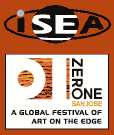
the power of paper
During ZeroOne San Jose, the Cellular Memory project enables you to listen to a short, recorded message describing various artworks in the fesitval. Call 888.411.0106 and enter the corresponding three-digit code from this list to hear a description of various works.
The project was nowhere to be found on the ISEA site and the introductory comments on the recording suggested that perhaps stickers or other visual markers can be encountered around the city directing one to call for info. I didn't spot any but happened upon a sheet of paper describing the project and listing codes - technologically quaint by comparison, perhaps, but oh so effective at info dissemination!
These are perhaps the perks of being in attendance - on the reverse of the sheet, a second mobile phone project: the People's Choice Award. "Vote with your cell phone for your favorite artwork...for the most challenging, provocative or entertaining artwork". American Idol meets emerging tech art. The winner receives $2500 from the City of San Jose. Not bad. But can multiple votes be cast?....
SMS contest voting aside, this listing proved to be the best information design as it grouped all artworks and artists by venue. A handy referrent in an immersive swarm of distributed sensory input.
Posted by michelle at 03:06 AM | Comments (0)
at ISEA: the world is getting smaller
Z1SMS
Over tea and biscuits discussion at the Crisis Center turned to conflict. Offered one participant, "Do the right thing." This is today's syndicated text+video message received from the Z1SMS project.
Didn't find your way to San Jose? ZeroOne to the Globe—The World to San Jose delivers daily messages to subscribers during the ISEA Zero One San Jose conference. Micro docu-dramatic portraits and insider news are sent to your cell phone or email address. sign up here .
Posted by michelle at 01:00 AM | Comments (0)
July 26, 2006
Ars Virtua
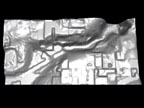
The Second Life Landscape Initiative
"A landscape comprises the visible features of an area of land, including physical elements such as landforms, living elements of flora and fauna, abstract elements such as lighting and weather conditions, and human elements..." -- wikipedia
The landscape is well understood in real-space as a driving force of the economy, an inspiration and a refuge. Ars Virtua is proud to present The Second Life Landscape Initiative. In this exhibit we are testing the boundaries of translation and connection. What happens to our relationship with the environment when we enter the synthetic world?
We examine four plots of land through data, analysis, visual imagery and prose. We then ask the viewer to engage the landscape and form their own memories and associations.
This exhibit looks at the land of Second Life through several lenses and tries to find a closer connection, this is not merely the distant gaze of the scientist but the the gaze of a lover or of a poet. We examine the data, forms, texture, images and stories that come from the land. Ars Virtua invites its viewers to come to the show and then to walk the surrounding lands of Butler and Dowden in search of their own narratives.
We will be highlighting the work of Lucid Vindaloo, LestatDe Lioncourt, Fiend Ludwig, Zero Philo. The SLLI (Second Life Landscape Initiative) opens Friday July 28th at 7pm SLT in Gallery 2 of Ars Virtua along the Butler/Dowden sims.
Located at the border of Butler and Dowden in Second Life's virtual environment, Ars Virtua's 3000 square meter two story building is divided into main and secondary galleries and a residency space. In order to visit Ars Virtua you will need to create a free account at Second Life (http://secondlife.com/join) and need to be running the current client. Once you have this properly installed you should be able to follow this link directly to Ars Virtua
secondlife://butler/228/15
Ars Virtua: Gallery 2, Butler (228, 15, 52)
http://slurl.com/secondlife/Butler/228/15/32/
Posted by jo at 06:01 PM | Comments (0)
July 15, 2006
Mirjam Struppek
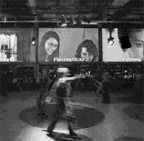
The Social Potential of Urban Screens
"...The emergence of the internet culture has brought new ways of participation and exchange to challenge hierarchical authorship. The 'new forms of creation mediated by networks more and more remote, fast and wireless' (Beiguelman, 2006) derived from this culture, influence new productions of public space. Artists are exploring the potential of the growing interconnections between online and offline worlds, and between social experiences in virtual and physical space. Wallace (2003) sees the internet connected to screens 'as a delivery mechanism to inhabit and or change actual urban spaces'. We can find various community experiments in the growing field of social computing: friend-of-a-friend communities; participatory experiments in content creation in the mailing list culture; and more recently, the wiki websites (where users can add and edit content) and blogging systems that serve an increased need for self-expression. By connecting large outdoor screens with digital experiments in online worlds, the culture of collaborative content production and networking can be brought to a wider audience for inspiration and engagement..." From The Social Potential of Urban Screens by Mirjam Struppek, Visual Communication, Volume 5, No. 2, Sage Publications June 2006, p 173-188.
Posted by jo at 02:25 PM | Comments (0)
June 08, 2006
Furthernoise.org presents
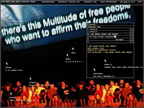
Month Of Sunday's Live A/V Net Performances
Furthernoise.org - Month Of Sunday's Live A/V Net Performances, Visitors Studio, 11th June 2006. Visitors Studio is an online place for real-time, multi-user mixing, collaborative creation, many to many dialogue and networked performance and play. Chat with other users while you upload and mix your sounds, images and movies in real-time.
16.00 -16.45 hrs Paul Wilson & James Smith: For this next Month of Sundays performance Paul Wilson and James Smith are mixing an audio / visual 'typography of place' where field recordings are combined with reprocessed images and sounds made in the extreme environment of former weapons testing lab at Orford Ness. They have collaborated on a range of projects which centre around techniques of sonic typography: using linguistic and alphabetic processes and systems to convert images, places and words into sound.
Recent projects have included a commission for The Wire magazine where the publication's covers of 2005 were reprocessed into a twelve-minute audio mix, and two installations for the upcoming 'Paintwork' exhibition at the Praxis Hagen gallery, Berlin where The Fall's '27 Points' album cover has been translated into both sound and (moving) image.
16.45 - 18.00 - Open Mix: Everyone is welcome to join this Open Mix which is one big A/V collaboration including contributions from online viewers in a host locations & time zones. For anyone who wants to contribute to this mix, media files must be a maximum of 200k and can be mp3, swf, flv & jpg formats. All mixes will be recorded to be featured in the next issue.
Log into file mixing studio - http://www.visitorsstudio.org
Links:
Paul Wilson - www.n-spaces.net
James Smith - www.3L-project.co.uk
Vistors Studio (VS) - http://www.visitorsstudio.org/about_vs.html
Credits - http://www.visitorsstudio.org/about_vs.html#credits
Posted by jo at 02:18 PM | Comments (0)
June 07, 2006
Metaverse meets mash-up:
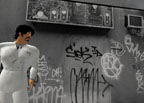
FREE CULTURE REMIX IN SECOND LIFE
Metaverse meets mash-up: come June 15, there's going to be another Free Culture/Creative Commons event in Second Life, this one springboarding off the recent CC Art Show 2006 at NYU and the Sharing is Daring event at Harvard. The object here is to take the art featured at those sites, and then remix it for an in-world showing on the 15th. You can do the remixing with Photoshop and other standard tools, of course, but for this event, the ideal medium is SL itself. Which is what I did with an Untitled photo by Joseph Gergel (above), uploading it as a texture, displaying it in-world, and using it as a backdrop for a dramatic screenshot, above.
No doubt Residents can come up with way better remixes, taking the appropriately-licensed art from here and here*, then converting them into screenshots, 3D sculptures, interactive sites, whatever. I'm looking forward to reporting on what comes out of this.
Deadline for submission is end of June 13. E-mail a screenshot of your entry to Jennifer Yip of Creative Commons (Genevieve Junot in SL), and be sure to include your RL and/or SL name for proper credit. Prizes will be virtual CC t-shirts and other tchotchkes, real and virtual. In any case, do come to the event to share your work, and hopefully meet some the original artists who may also be in attendance. (Full disclosure: I'm now honored to be a part-time consultant for CC's events and activites in SL.) ... [blogged by rubaiyat on New World Notes]
Posted by jo at 01:42 PM | Comments (0)
June 05, 2006
Second Life Exhibition Opportunity

'The New West: An Exhibition of Virtual Folk Art'
Artists are invited to submit work for a specially created area of the online community Second Life (SL).
Art must be created within SL, using easy-to-learn modeling tools. Textures can be made in paint programs and uploaded to the SL world for use. Ideas will be accepted approximately one-two months before the conference date. Artists will be instructed how to set up their own avatar in SL, and given parameters for the actual artwork creation. All work is due before the conference to allow the jurors time to adequately examine and interact with the works. Criteria will include orginality, skill, aesthetic qualities, and interaction. Example images will be posted in the near future. This competition is hosted by the game collective, Ludica, with support from Linden Labs, makers of Second Life.
The best of show will be on display at the San Jose Museum of Art throughout the ZeroOne / ISEA2006 Conference.
Posted by jo at 03:31 PM | Comments (0)
OneSmallStep: a MySpace LuvStory
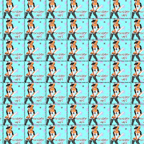
Cut/Paste Identities
We are not ourselves. We cut and paste as we are cut and pasted. We are the remix of images and sounds that never existed outside of this mediated dream. And we are happy to exist this way.
OneSmallStep: a MySpace LuvStory is an unfolding automated jam - a conscious sampling and randomized regurgitation of MySpace.com media archeology wherein desire, fantasy and fetish form a composted feast for the withered and lonely senses in an eternally habitual loop of voyeuristic consumption, spectacular regurgitation, virtual intimacy and identity production/consumption.
With each launch, OneSmallStep runs continuously while randomly remixing content form a database that is periodically updated. OneSmallStep is a conceptually interactive work, and also, a non-clickable work.
OneSmallStep: a Myspace LuvStory is a project developed for Concept Trucking, an exhibiton venue maintained by LeisureArts that uses MySpace as its platform. It hosts work that critiques, mimics, or otherwise utilizes the structural logic of social networking sites and other Web 2.0 phenomena.
Posted by jo at 09:26 AM | Comments (0)
May 11, 2006
CALL FOR PROPOSALS: "TRANSPOSITION"
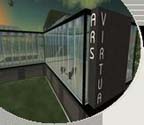
Second Life as Temporary Canvas
In this age of increasing data collection, storage, and management, it becomes necessary to create new visual forms for the representation of such information. Second Life provides an atmosphere in which the environment acts as a canvas for temporal representations of data, not only presented to the user but interacted with, and experienced on a different level of immersion than more traditional displays. The management of tools, data, and environments requires the inception of these interfaces.
Ars Virtua is seeking computational information design projects unique in nature to the environment Second Life provides. Pieces should contain unique techniques and methods in presenting information design, interaction design, communication design, and/or data visualization. Projects that extend their abilities to interactivity within the virtual reality environment are highly encouraged to apply.
Proposals should include:
Name and contact information
Description of the project
Screenshot if available
DEADLINE TO SUBMIT: May 19th, 2006.
please email transposition[at]arsvirtua.com for more information [Related 1, 2, 3, 4, 5, 6]
Posted by jo at 08:04 AM | Comments (0)
May 10, 2006
Blind Love
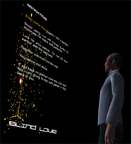
Extensions via Virtual World of Art
In Blind Love (click on Art), two visitors must find each other before they can find the way out of a pitch-black labyrinth. Each is armed with a weapon that shoots luminous particles. The particles explode on the walls and cascade into the corners, revealing the skeletal outline of the labyrinth's architecture. The two visitors must use the light emitted by their weapons to find one another, but-in an inversion of normal game logic-must not hit and kill each other if they hope to win. Like lovers, the visitors must blindly trust each other in order to survive, and must approach one another despite the danger.
Blind Love is one of the art works created for EXTENSION (click on Virtual World of Art, Extensions/SAT), a virtual architectural intervention that explores the potential of digital architecture to reveal and transform urban, cultural, and spatial identities. EXTENSION was created for the SAT in Montreal, one of North America's leading centres for new media. Visitors entering EXTENSION through the SAT terminals find themselves in a virtual space that mirrors their actual physical surroundings.

As they move through the environment, they cross from reality into virtuality, and from simulation into representation. Within the virtual environment, the existing building of the SAT has been recreated as a realistic 3D model. This simulation is transformed and reconfigured with the addition of a vast, zeppelin-shaped structure affixed to the roof. From inside this glass-encased space, visitors have a panoramic view of a virtual Montreal, where the city itself has been reconstructed with a poetic blend of realism and utopian fiction. Visitors to this near-real space discover experimental artworks in the halls and rooms of the virtual environment, and layered in other dimensions accessible through portals that brings the viewer into dedicated art installations. Anchoring virtual experience in real space, EXTENSION blurs the boundaries between imagination and perception. Grounded in the real but not limited to the realistic, EXTENSION is a reflection of the concepts and visions each of us forms about spaces and places.
EXTENSION is one of three nodes of the Virtual World of Art.

As technologically mediated experiences the Internet, games, cinema, television occupy ever more of our time and energy, it becomes increasingly vital that we create alternative spaces and environments for experience within these borderless territories of information and communication. Virtual World of Art invokes, manipulates and transforms the vocabulary and logic of game culture to create artistic engaging spaces which awaken aesthetic, emotional, social and intellectual responses radically different from those engendered by contemporary mass media. The project explores a variety of significant problems that cultural institutions committed to artistic practice within a networked electronic environment continue to face: how to create esthetically compelling and emotional online experiences, how to link physical and data spaces together, and how to effectively enable human communication and exchange in a physical space where local and remote visitors and performers can communicate virtually through technologies and computer interfaces.
Virtual World of Art investigates the artistic possibilities of immersive game technology and proposes new models for experiencing architectural and public spaces, sociability, and cultural production. Grounded in reality but not limited to realism, Virtual World of Art forms a dynamic, socially relevant, independent alternative to the existing art world, enabling artist to emancipate and develop a critical view of the future and meaning of contemporary art.
Virtual World of Art is the title for a series of new media art projects which subvert and reconfigure multi player game technology to create a network of artistic virtual environments. Each of these virtual environments called nodes, containing digital artworks and virtual art installations, is associated both conceptually and thematically with a specific site, arts centre or a public event where the project is presented on a long-term basis. These virtual environments are connected together by the internet forming a new kind of enlarged social and experiential public space for artistic expression and social exchange.
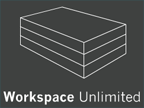
VWA will connect at least 3 locations or nodes in order to function as a complete project. Each node explores a different notion of hybrid between physical and virtual public space. Visitors will be able to interact through terminals installed at the nodes or at any public space in the world that has a high-speed internet connection.
Virtual World of Art is a project of Workspace Unlimited.
Posted by jo at 10:57 AM | Comments (0)
May 03, 2006
Net Community Hacks Cultural Funding System

125,000 euros Distributed
Our much-discussed, game-theory-oriented approach to cultural funding represents a clear rejection of all the Austrian cultural industry’s hegemonic tendencies, states MANA coordinator Stefan Lutschinger: This hack of the outmoded jury and committee system opposes every rationalistic funding cut with pure difference, contingency coping and the fruitful development of paradox.
Software-based Funding Distribution: Last week, a participatory cultural support budget of 125,000 euros was distributed to artists and cultural producers in Vienna using the MANA Community Game – an innovative software-supported selection process. The decision regarding the distribution of funding was not made by curators, juries or committees, but by the submitters themselves. Twelve people will receive project grants between 5,000 and 15,000 euros, whereby 42% of the recipients are women.
“Old” Concepts and “New Thinking”: The Community Game is one of the most innovative distribution systems for cultural funding worldwide. It is based on “old” concepts of the avant-garde – auto-curating and self-organization – and the “new thinking” of second-order cybernetics. MANA’s great advantage is its capacity for self-correction and adaptation to intelligent system environments: errors and irregularities can be recognized and corrected immediately by the net community, which emerges strengthened from this process. Here 120 submitters agreed to a complex set of rules.
A Self-managed Cultural Funding Budget: Since the autumn of 2004, the open net community “netznetz.net” has grown out of the numerous digital cultural initiatives that have developed in Vienna in recent years. In order to do justice to these diverse cultural and artistic modes of expression, an application has been made to the City of Vienna’s Department of Cultural Affairs (Net Culture Unit) for a self-managed cultural funding budget to support this very active scene with around 500,000 euros yearly. The heart of this funding model is the software-based selection process MANA. After a two-month evaluation phase in early summer, the net community will decide on its specific adaptation and further development.
Inquiries:
Stefan Lutschinger, Johannes Grenzfurthner, Hans Bernhard
Email: s.lutschinger[at]digitaldrafts.at
+43 660 6538616
http://mana.netznetz.net
http://en.wikipedia.org/wiki/Netznetz
http://www.parliaments-of-art.net
Posted by jo at 12:12 PM | Comments (0)
April 27, 2006
Social Video
![]()
Ten Video Sharing Services Compared
"The number of video-sharing sites has shot through the roof recently, as dozens of companies try to become the Flickr of the online video world. To this end, many video services have started offering new features like editing and remixability in an attempt to snatch a piece of the ever-expanding online video pie. But for the average user--who just wants to post a video on the 'net and share it with some friends--there are already too many options out there. All one really wants to know is, which site is going to work, with the least amount of hassle?
I took 10 of these sites [Eyespot, Google Video, Grouper, Jumpcut, Ourmedia, Revver, Videoegg, Vimeo, vSocial, YouTube] out for a test drive, and picked some winners. If you want to post, watch, share, or edit video online, this post's for you.
To test each service, I uploaded my demo reel (a 15MB Sorenson 3-encoded Quicktime file) to each site and compared video quality, site interface, community features, and functionality. Where applicable I also tried to embed the resulting video in a Wordpress page. Many of these sites are still in beta, and their functionality could change in the coming months, but if you're looking to post and share video today, this is the current state of things. [posted by Ryan Bilsborrow-Koo on DVguru]
Posted by jo at 08:00 AM | Comments (0)
April 22, 2006
Ars Virtua Gallery & New Media Center
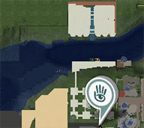
Opening of "The Real"
Ars Virtua Gallery & New Media Center invites the public to the opening of it's inaugural show entitled The Real. The event will be held on the grounds of Ars Virtua which can be found here in the 3d rendered world of Second Life. Six artists are represented in this show which examines the nature of observation, movement, communication, contact, and fetish in the virtual environment of the avatar.
These investigations form the basis of questioning what is real, they go beyond the experience of the user at the keyboard to reference that similar and familiar experience of the driver behind the wheel. The metaphor remains consistent between the two. The answers we arrive at are not surprising and are no more profound than the pen on your desktop.
The show runs from April 28 through June 23, 2006 with the opening and artist's reception at 7pm SLT (Pacific Daylight Time) on April 28. Inquiries to gallery[at]arsvirtua.com [Related 1, 2, 3, 4, 5]
Posted by jo at 10:46 AM | Comments (0)
April 20, 2006
Site Specific @ Web

Online art and performance from Italy
Site Specific, a nonprofit organization that promotes site-specific contemporary art on the territory and on web, announces the beginning of its activity hosting inside its web-pages the collective Site Specific @ Web, curated by Corrado Mora with the publication of artworks expressely created for the Internet dimension. All partecipating artists are characterized by different artistic poetries and levels of familiarity with the digital technology, and they all have created works that are able to express their vision of time and space inside the Web, according to their personal experience and sensibility.
The group exhibition will be organized in two different moments linked by a virtual performance that will last almost two months. Site Specific @ Web will present unpublished web/site-specific works by: Riccardo Benassi, Alessandro Capozzo, ConiglioViola, ELASTIC Group of Artistic Research, Casaluce–Geiger [synusi@ virus cyborg], Fausto Gilberti, Laurina Paperina, Chiara Passa, Alex Pinna and Laura Viale.
Saturday 8th April 2006, 6 p.m., works by Riccardo Benassi, Alessandro Capozzo, Fausto Gilberti, Laurina Paperina and Laura Viale will be published on-line. In the same moment it will start Casaluce-Geiger [synusi@ virus cyborg] work in progress, that will last until the date of the Finissage.
Saturday 29th April 2006, 6.p.m., works by ConiglioViola, ELASTIC Group of Artistic Research, Chiara Passa and Alex Pinna will take the place of the precedent works, while Casaluce–Geiger [synusi@ virus cyborg]'s work in progress will continue.
Saturday 20th May 2006, 6 p.m., works of Site Specific @ Web #1 and #2 will be shown together into the Finissage with the conclusion of Casaluce–Geiger [synusi@ virus cyborg]'s work in progress.
On the occasion of Site Specific @ Web it will also announce the winners of the 2006 Edition of IndexPage Competition, the contest promoted by Site Specific and addressed to those artists and designers who were interested in re-elaborating the indexpage of the website.
A Jury composed by Tatiana Bazzichelli (an expert in hacktivism and new media art and founder of the AHA: Activism-Hacking-Artivism project), Mauro Ceolin (a multimedia artist and painter), Corrado Mora (founder of the Site Specific project), Domenico Quaranta (a curator and art critic with a particular knowledge in new media arts) and Valentina Tanni (an art critic, curator, professor, content manager and vice-director of Exibart magazine) has proclaimed as ex aequo winners of the competition'first edition: Hans Bernhard ( ÜBERMORGEN.COM), with the work Psychotropic Drug Karaoke, and MEZ [Mary-Anne Breeze], with the work _ID.Xorcism_.
The artworks' publication will be in contemporary with the Site Specific @ Web # 1 and # 2 and it will be linked by a monographical part about the two artists, curated by the winners and the Jury.
Moreover Site Specific website will be completely redifined according to the concept of Stéphanie Boisset, a french-german webdesigner and artist, that has received the honourable mention of the IndexPage Competition 2006 for her project.
Site Specific
http://www.sitespecific.it/
Posted by luis at 04:44 AM | Comments (0)
February 13, 2006
newmediaFIX INTERVIEW:
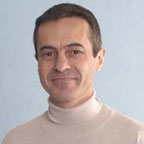
Jose Luis Brea: The Critic Operator of the Web 2.0
newmediaFIX's contributor, Ignacio Nieto interviews José Luis Brea who was formerly Dean of the Fine Arts Academy of Cuenca and Director of Exhibitions for the Ministry of Culture between 1985 – 1988. As a free lance art critic, he is a regular contributor to Spanish and international art magazines including Frieze, Flash Art and Parkett. He is Spanish correspondent for Arforum and regional editor for Rhizome. He has organized multiples exhibitions as independent curator and has published several books including Auras Frias and El Tercer Umbral. Currently, he is prefessor of Esthetics and Theory of Contemporany Art at Carlos III University in Madrid, editor of the magazine Estudios Visuales and he is director of two new online projects: salonKritik and ::agencia crítica::
Ignacio Nieto [IN]: With the popularization of blogs, a number of spaces have developed which had no place within the logic of political economy; contained and produced by media, creating a new front for ideas and critical thinking. For you, what would be the advantages and disadvantages that blog technology has over traditional media (newspapers, radio and television)?
José Luis Brea [JLB]: I believe that there are two fundamental advantages: an extended possibility of access, and participation. The first is very important, of course, because it proposes access to critical thinking that is made available to a larger part of the population, something that was not possible in the past (this is without exaggeration, of course, one must never forget that the supposition of total access is an illusory fantasy—an interest of Capitalist ideology). Considering television and the culture of diffusion, Bourdieu called this the “lowering of the level” (of access). Let’s say that more people heard and saw—maybe even read—for example philosophers; Derrida, and now Zizek, whom they would never have had heard, seen or read before. This is much more evident with new media (especially since the development of the web 2.0)
But for the same reason this amplification (possibility to access) would not have an excessive importance; it would be purely quantitative, it would not contribute without making “more of the masses” the culture of masses, and maybe to incorporate in it cultural objects, of the critical tradition which before belonged to areas in culture less popular, more “elitist” or more reserved for specialized communities, let’s say (for example “deconstruction,” “Theory of acts of speech,” or “antagonist thinking”). This is why I think that the quality that is important is the latter, that which I have called “participation.” This is something that the web 2.0 has re-enforced a lot. Before, of course, it had already occurred that all new media, obviously from radio to video, from “vietnamita” [1] to photocopy or the fanzine, and of course, the website programmed in HTML, makes possible a certain extension of interactivity (in the construct of collective critical thinking), related to the conversion of the spectator/reader/ receiver into emitter. But with the emergence of the blog, forums postnuke, and phpBB, wikis, and podcasting in general all DIY media publication has grown exponentially, and it is there where a great leap has been produced; its impact on the discursive field we currently entertain, (critical thinking), necessarily is huge; and it will ultimately culminate in those diverse forms authors call “collective intellectualization.”
Let’s say that all the manifestations of technologies of treatment, gesture, diffusion, archiving, and organization of access to knowledge (not only the tools of e-science, but also those dialogical and interactive prototypes of the web 2.0), necessarily open and submit critical thinking to processes much more intense and, to put it this way, frantic public contrast. The challenge for critical thinking resides in confronting the consequences of its new logic and its social construct.
And it is there where it should be pointed out, also, the disadvantage, the danger, which respectively corresponds to new media: that the elusive “lowering of the level” is not only produced in the terms mentioned above (of more open access), but also produced as a lowering of the level for content. Let’s say that the public dialogue ends up converting critical thinking into chatter, vulgarity, in an ineventual series of commonalities badly developed and repeated from blog to blog, like echoes each time more hollow of ideas, which in those repostings lose more and more panache and sharpness. In my reflection on the transformation of the tools of cultural criticism with the apparition of these new media, I dedicate an ironic post to this question specifically titled “Chatter” (of unquestionable Benjamanian references, which surely some readers will recognize).
(http://www.agenciacritica.net/criticaeck/archivo/2005/11/chachara.php)
IN: Do you believe that blogs could displace ranking terms in search engines like Google?
JLB: If I tell you the truth, I don’t think so. I don’t doubt that tools of semantic articulation of content (and in some ways efficient for the organization of searches) like Technorati or del.icio.us, or metablogs, could serve a similar function. But, in any case, its utility would be principally limited to the extended blogosphere, let’s say projects specific to the web 2.0, linked to the “personal publication.” Regardless, there are fundamental spaces—all those related to science, with the tools of the web of knowledge, with the new structure of access to the web of academic research (with all the transformations that it is experiencing)—that keep needing tools of organization for navigation, to classify and search, let’s say. On one side, it is evident that this have not been developed autonomously (for instance, there is no search engine for the “web of knowledge,” at the periphery of the search engines proper of databases for specific data, for example ISI Thompson), and on another side, search engines like Google do not stop attending also to those necessary searches. I want to say that at the same time that projects are developed, like Blogger, also they place in effect the digitalization of great libraries. Or, let’s say, that they attend the development of the web of “publication of personal e-culture” as well as the re-conversion and turnaround of the web of “high cultural research” and “academic culture” linked to the development of e-science (I choose general terminology and I use it in an imprecise way, because after all, this is all about trying to understand my response in relation to your question and up to what point I think that the development of those proper mechanisms of the “web of collective intellect” does not cover aspects of change for which old search engines are still essential).
IN: The blogs that work like editors/directors (Salonkritik and Agencia Critica) posses different directions, but they have various areas in common; from the design to the technology that supports them, onto the concept that validates them: criticism. Could you explain the genesis of each of these blogs?
JLB: Of course you are right about both things. It is obvious that they have a lot in common: mainly on a formal level and on their development, which come from the same hand; our team is very small –and I also confess to you that all the programming and maintenance is done by myself; I do not want, nor can I lose too much time in researching technical questions (nor obviously in design), beyond of what is strictly necessary for the final development of specific projects, logically; even though, in any case, we dispose effectively of all kinds of tools—from wikis to systems of podcasting, forums with postnuke or our own blogs running on MT or Wordpress, and all on our own server, which allows us to launch a new project that we find interesting in a matter of hours.
Regarding content and objectives, the two blogs are truly different. SalonKritik basically is a resource of art criticism which is published in Spain, without much pretension other than to align (therefore open to other publics, at the same time and potentially to other debates) something that at a moment occurs only in one medium that simultaneously is elitist and functions very corruptly in Spain like a tool of power, which is the “cultural supplement.” Let’s say that salonKritik tries to destabilize a bit the supplemental economy of authority. Open it to other dynamics (even though I have to admit that the success that we have achieved with this project is not reason to launch fireworks), to enable the publication of visions and perspectives that are not published in that media, to which people can answer… ultimately, to validate justly those other qualities that we know new media have in relation to old media specifically in diffusion, contrast, and participation in the construction of critical thought.
Regarding La Agencia, it is a more modest and ambitious project. More modest in the sense, I suppose, that it would interest a smaller audience, but which is more ambitious when aiming to make public something that did not exist, and which, in my opinion, tainted the cultural landscape in Spain, which is the critique of artistic and cultural politics. There is Art criticism (quite a bit, which is not very good, of course, but very common) but in contrast there is not a lot of criticism about politics of art. And, well, more specifically that is the objective of the Agencia Crítica.
The main problem that I encountered with La Agencia, is solitude (I don’t know if this is as a forward or a goalie before a penalty, to tell you the truth), although it is true that with time la Agencia receives more collaborations by diverse people, which is what I believe would make it more interesting: that it could cover the most expansive set of multiple points of view; as different as possible. In any case, la Agencia has little time online still, and I am confident that little by little, the number of collaborators that want to participate will grow.
IN: A last question: Tell me about your new book?
JLB: Well, I have a couple of years working on it. The dense nucleus is a chapter titled “e-ck: Electronic Cultural Capitalism” which in reality I considered finished two years ago. It basically deals with the process of transformation of Capitalism in which the accumulation of capital is centered mainly on the processes of symbolic and cultural production, and all of the multiplicity of consequences that it has, including in the new political economy of societies of knowledge, as well as the critical position found within these cultural practices.
In any case, the title that the book will have is not that one (of Electronic Cultural Capitalism) but of “Cultura_RAM,” since other previous chapters have focused each time on such conundrum, specifically, of characteristic transformation of cultural practices (and its rules of production, distribution and archiving: there you have the concept of RAM like a new form of characteristic memorization) and the models of production and forms of knowledge, from the university, the museum, to criticism… Some of the texts included, as it always happens with books, have been previously published and distributed online—for example that one on criticism of art, which is the one I referred to above—but many others for now have not been edited. I am definitely finishing the book during the next few weeks, and I hope to send it for publication very soon.
(1) Vietnamita: Spanish colloquial term given to “do it your self” offset machines that were used by the anti-Franco resistance to print pamphlets.
Posted by jo at 09:39 AM | Comments (0)
January 12, 2006
The Upgrade! Lisbon
![]()
January meeting featuring Patricia Gouveia and Nuno Correia
Lisboa 20 Arte Contemporânea welcomes, from this January, The Upgrade! Lisbon, a monthly gathering of new media artists, curators and general public that fosters dialogue and creates opportunities for collaboration within the new media art community. At each meeting one artist/curator present work in progress, past work or a concept and participate in a discussion with those attending the presentation. We would be delighted if you could come - whether you are an artist, a techie or simply someone who is interested in new media art!
The Upgrade! Lisbon is curated by Luis Silva and will have for its first meeting Patrícia Gouveia and Nuno Correia presenting their 2005 project Role Playing Egas
The Upgrade! (http://theupgrade.net) was started by Yael Kanarek in 1999 and is currently hosted by Eyebeam, New York City. Upgrade! affiliates include Vancouver (2003, curated by Kate Armstrong), Montreal (2004, curated by tobias c. van Veen), Boston (2005, curated by Jo-Anne Green), Seoul (2005, curated by Suhjung Hur), Tel Aviv (2005, curated by Mushon Shual), Munich (2005, curated by Tamiko Thiel), Oklahoma City (2005, Adam Brown), Chicago (2005, Open Node), Istanbul (2005, curated by basak senova), Scotland (2005, curated by Cezanne Charles, Robb Mitchell and Michelle Kasprzak) and Sofia (2005, curated by Kyd Campbell).
Calendar of events:
January 17th (19:00) :
Patrícia Gouveia e Nuno Correia
Role Playing Egas
Rua Tenente Ferreira Durão, 18B 1350-315 Lisboa (Campo de Ourique)
February:
André Sier
March:
Susana Mendes Silva
(For more information or project presentation, please email me) or go to The Upgrade! Lisbon
Posted by luis at 01:42 PM | Comments (0)
November 18, 2005
a Pro Helvetia and Xcult project
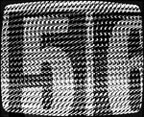
bastard channel
bastard channel is a cross between a television and a web project, a platform in the Internet that tells the story of itself as a television channel. The channel works with the lowtech and financial means of network art and has collaborators on three continents. Its programme can be received all over the world.
On 18 November 2004, bastard channel has been celebrating its start with six programmes within the framework of the Viper Media Festival in the Basel Kunsthalle. By the winter of 2005, seven new programmes will have been added. The participants are artists from Bangalore, Basel, Berlin, Geneva, Los Angeles, Mexico, Paris, Seoul, Tokyo and Zurich, as well as collaborating text writers, translators, programmers and graphic artists.
It will not be possible to receive all the bastard channel programmes at all times, for our online project operates according to the television programme structure. Trailers will provide information about the times of day and night when you will be able to receive the next programmes in your part of the world. Whereas the terrestrial television stations are working on making it possible for programmes to be broadcast online independently of times and dates, bastard channel is set on limiting consumption: we do not want our programme to be available all the time, and we take the opportunity of wagging a cautionary medial forefinger at the "zap & surf attitude".
bastard channel is intended to reflect the web as a time medium. This is a cross between the babbling TV promises and the hesitant web response of a 56k modem. Some of our programmes are run like films, animating the screen at a breakneck pace, others step intentionally on the brake, tempting and frustrating at one and the same time. Still others bring streams of data onto the screen or make interaction offers where the public can spend 30 minutes or 30 seconds. At bastard channel, even the TV test pictures are interactive, and viewers receive personal answers to existential problems from the Television Sphinx - without, however, knowing whether they will receive a written or spoken answer from the Sphinx herself or her intelligent robot within two to three days.
56kTV - bastard channel has its own programme magazine. International authors from the worlds of the film, art and the media sciences comment on the TV project and the individual programmes, thus enriching the audio-visual online offer by a print & read version. We are investing in a good visual concept and leaving the print-on-demand to our public, since the TV magazines can be printed on every home printer.
Posted by jo at 06:01 PM | Comments (0)
October 11, 2005
virose.pt
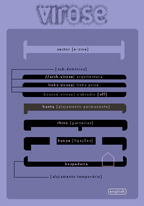
Portuguese Platform For Debating Art And Technology
Virose is a Portuguese, artist run platform dedicated to debating the relation between art and technology in contemporary societies. It was created in 1997 and since then has spread its reach. Nowadays it features an architecture department called arch.virose and publishes regularly vector, an open to participation e-zine that includes both theoretical and critical texts as well as new media art projects specifically made for Virose.
Another goal of this platform is to share its own resources and, for that, has room in its server for artists having difficulties in putting their work online. Two hosting departments are available: a permanent one, hanta, and hospedaria, for temporary hosting.
Virose is also responsible for arena, a discussion list about art and technology, and infovir, a mailing list informing its subscribers of Virose's own activities, news and projects.
Virose Organization, Porto, Portugal
Posted by luis at 01:24 PM | Comments (0)
September 06, 2005
The Wallpaper

One Story, Multiple Viewpoints
In The Wallpaper, various elements of a visual and aural scene (humans, chairs, desks, ambient sounds) are recorded and stored separately from each other in a computer and then recombined in real-time during playback according to instructions in a script. Representing the scene in this way allows the creator of this piece to experiment with changing camera angles and shot selection, swapping characters, and modifying acoustical characteristics based on audience interaction in order to express different subjective points of view of the same story. The piece is also responsive to passive circumstances of its delivery, by showing more or fewer cuts and close-ups depending on the size and shape of the viewing window.
These two MPEG movies [1] [2] are two of many possible playouts of the production. One presents the story from John's subjective point of view, and the other presents Kathy's point of view. You will notice differences in shot composition, close-up placement, backgrounds, ambient sounds, and acoustics. The system is also capable of blending these two "extremes" to produce versions that mix the two story perspectives to different extents. In the actual piece, the viewer has real-time control over the subjective story perspective and the camera position. The Isis object-based media prototyping environment was used to script the entire presentation.
Posted by jo at 11:05 AM | Comments (0)
August 19, 2005
BLUEVEND

Films on the Move
BLUEVEND is a new purpose-built vending machine with touch screen and Bluetooth technology designed for the wireless distribution of creative mobile phone content. BLUEVEND will present Pocket Shorts at its EIFF debut in August 05. Pocket Shorts gives new filmmakers the opportunity to experiment with new platforms. Look out for news of the second commissioning round in the Autumn 05.
Pocket Shorts Scotland will also be commissioning this year. All Pocket Shorts films are either 60 seconds or 4x15 seconds in length and will be freely available to everyone with a Bluetooth enabled videophone. So if you are in Edinburgh between 17th and 28th August come and try it out - we will be in the EIFF Delegates Centre at The Point Hotel on Lothian Road.
We will also be sharing our practical research into making original content for mobile phones at a presentation at The Filmhouse, Lothian Road, Edinburgh on Tuesday 23rd August at 5.30pm. Book your tickets now www.edfilmfest.org.uk.
Pocket Shorts is a NESTA funded initiative devised and managed by Blink.
Posted by jo at 08:34 AM | Comments (0)
December 27, 2004
netzwissenschaft
![]()
Emerging Infrastructures of All (Inter)net Research
Dr. Reinhold Grether's network research | netzwissenschaft site maps the "emerging infrastructures of all (inter)net research endeavours. net.science as an anthropology of connectivity is trying to overcome the constraints of specialist method transfers on net matters. the protuberance of technical networks necessitates a professionalization of human net knowledge. neither the isolation of concepts as in basic research nor the encapsulation of processes as in applied sciences will ever be able to adequately describe the complex autopoiesis of networks. net.science is undoubtedly developing into a scienza nuova of its own right."
Check out his Mobile Art and Virtual Performance research areas.
Posted by jo at 04:45 PM | Comments (0)
October 19, 2004
Proboscis
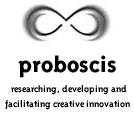
Actors, Agents and Authors
"...Proboscis is trying hasten the arrival of a world where people author as well as consume."
"I believe that this radical shift in information flow and control away from large institutions (both public and private) to ordinary people could have a profound social and cultural impact on the uses and implications of wireless and mobile technologies and mobile technologies in daily life, as well as social and community relations. I believe that the future for our society lies in broadening the capabilities of its members to be actors, agents, and authors, not merely consumers of a culture created by others employed in the 'culture industry.'" Giles Lane quoted by Howard Rheingold in Proboscis Probes Urban Public Authoring. Also, see post on Urban Tapestries.
Posted by jo at 08:48 AM
October 11, 2004
Human Ethernet
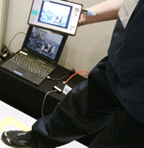
Streaming the Body
NTT demoed their human body data transmission technology at CEATEC JAPAN 2004. The technology detects weak electric fields in a human body by using an optical electric field sensor and provides the data communication speed of about 10Mbps (much faster than 3.7Kbps, the speed Matsushita Electric Works' technology enables.) The system also uses the TCP/IP protocol, making a human body equivalent to 10Mbps ethernet. However, unlike Matsushita's technology that is ready for commercial use, NTT's technology may need some work before it can be commercialized.
It works as follows: You step on a copper platform containing a server computer and hold a computing device, then data are sent from the server through your body to the computing device. For example, you can view streaming video transmitted through you body on your handheld device.
Via RFID in Japan < IT Media. Reblogged by Regine from we make money not art
Posted by jo at 11:06 AM | Comments (0)
August 24, 2004
author your own
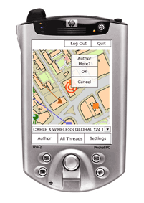
Urban Tapestries
Urban Tapestries is "an experimental location based wireless platform that allows users to access and author location-specific content (text, audio, pictures and movie)." Initially created by artists, the project rejects the template of conventional tourist guides in favour of public authoring informed by local knowledge and shared experience. It seeks to enable people as their own authors and agents, to ‘map’ and 'mark’ territory as part of belonging and of feeling a sense of ownership in their own environment.
"The structure of the art world is a world in which you go to a place to receive an experience," Giles Lane, one of the developers of the London-based says. In the future, artists will still be important for their spark, but the balance will shift from a push model to a more engaged, multi-directional relationship." (from receiver "Walking Through Sound" by David Toop.)
They recently ran a 4-week free trial of of the Symbian UIQ smartphone version of UT in London and will be reporting on it shortly. They hope it will provide interesting information on public authoring technologies, reveal uses to which they have already been put, and allow new uses to emerge.
For more information, see Giles Lane, Social Tapestries: public authoring and civil society
Posted by newradio at 10:05 AM | Comments (4)
